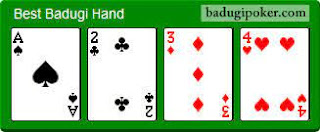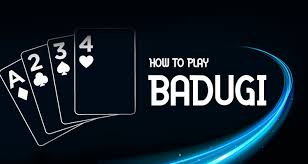GET TO KNOW THE INS AND OUTS OF BADUGI
In the last decade or so, Badugihas become a common fixture in mixed cash games across the world, with high stakes games running online also. The game features a different hand ranking system to conventional forms of poker, leaving some to question if the game has any place at the World Series of Poker and if the game should even be considered poker. Originating in Korea, the game is fast-paced with a lot of variance, a lot of room for creative plays and many different play styles can be profitable. This along with an importance being placed on many fundamental poker concepts makes it one of my favorite variants and there’s no doubt in my mind that this is a great form of poker. In recent years, the folk at the WSOP seem to be leaning towards agreeing with me. Despite not yet having its own standalone event, it will again feature in both Dealers Choice events ($10000 and $1500) as well as the Triple Draw Mix ($2500). Its cousins Badeucey and Badacey will also feature in the Dealers Choice events, so having some solid Badugi foundations will be important for those looking to try their hand in these events or in mixed cash games this Summer in Las Vegas.
Badugi is usually played Fixed Limit, though some Pot Limit tournaments do exist online. The WSOP tournaments and likely all cash games featuring Badugi and its variants will likely be spread fixed limit. Like in 2-7 Triple Draw, players have three draws to improve their hand. However, Badugi is played with only four cards and has its own hand ranking system.
A Badugi is a rainbow, unpaired hand. Those who regularly play Omaha games may have heard this term used in a derogatory fashion to remark upon the lack of suits and pairs in a hand. Here though, the aim of the game is to make Badugis. Badugi is a lowball game and with the lowest Badugi (counted as the lowest card in the hand) winning the pot. For example, 8-7-4-3 (rainbow of course) beats K-5-4-3 because an 8 Badugi beats a King badugi. If both players have an 8 Badugi, the second highest card would be considered and so on. The best Badugi is 4-3-2-A and like in other lowball variants, it is often referred to as a wheel.
If no one has a Badugi, the best three-card hand will win. Three-card hands allow one card in the hand to be paired and/or duplicating a suit with the rest of the hand. For example, 4s-3h-2d-Ad would not count as a Badugi, because a diamond is duplicated. This would be considered a 4-3-A three-card or more commonly, “tri.” 7s-5h-4d-4c would also fail to qualify as a Badugi because the 4 is paired. This would be a 7-5-4 tri. If no one is able to make even a tri then you are firstly probably playing in an excellent and secondly, the best two-card hand would take the pot.바둑이사이트
The worst Badugi, K-Q-J-T is almost exactly a coin flip against a one-card draw. Whilst playable from later positions, this hand should usually be folded from early positions, consider it as a parallel to folding 22 UTG in full-ring NLHE. The hand flips against many hands if all in but its playability is very poor and will often be put in lots of tough situations. From early positions, “rough” King, Queen and Jack Badugis such as the one mentioned above should often be folded, especially if one is still learning the game. However, smoother Badugis like J-5-3-2 can be played more comfortably as they offer the ability to “break” our hand and draw to a fairly smooth tri (5-3-2 in this case), either immediately or later on in the hand if it is believed an opponent has drawn into a stronger Badugi. Smooth tris with three unpaired, rainbow cards no higher than a 6 can be considered from the early positions. All two-card draws should be folded without too much thought.
From the later positions and when defending the big blind, we can open up the pot with most, if not all Badugis, a lot of tris (depending on the situation, up to an 8 tri is reasonable) and our stronger two-card draws such as 2-A and 3-A.
Similarly to Triple Draw, betting when drawing less cards than our opponent is usually correct. An exception is when defending the big blind and drawing one and the original raiser draws two.
When both players are drawing, usually the better hand tri will be taking the initiative. If opening from the button and playing against a defended big blind, the opener should continue to bet his strong tris most of the time (a rough guideline is 7-3-A and better). In an aggressive game where opponents are c-betting with most of their tris, taking the betting lead with a check-raise with the best tris (let’s say 5-2-A and better) is often a strong play, especially if defending the big blind against an open from a steal position and possesses a wider range.
It should be noted that Badugi is a rather tough game to make a premium hand in. With this in mind, running what’s known as a “snow” is often a great opportunity to force your opponent(s) into a fold. A snow is when one chooses to stand pat without a made Badugi. In my opinion, there are two great times to try this play. The first is when one is dealt a low flush pre-draw (6h-5h-3h-Ah for example). WIth this hand, we block a lot of the cards our opponents will need to firstly be dealt or to make a premium tri or Badugi. Drawing one card first on the first draw before standing back on the second is a nice way to disguise the bluff we are making. The second good situation is to open in late position with a very rough try (9-8-6) for example. Here, the two-card draw is not strong enough and we would usually fold. But if the blinds were considered good candidates to bluff, I like to open this hand, draw one with the hope of making a Badugi, then converting to a snow like in the first example if unsuccessful. Showing up with a 9-8-7-6 Badugi after drawing one pre will do excellent things for one’s image if forced to show down.




Comments
Post a Comment